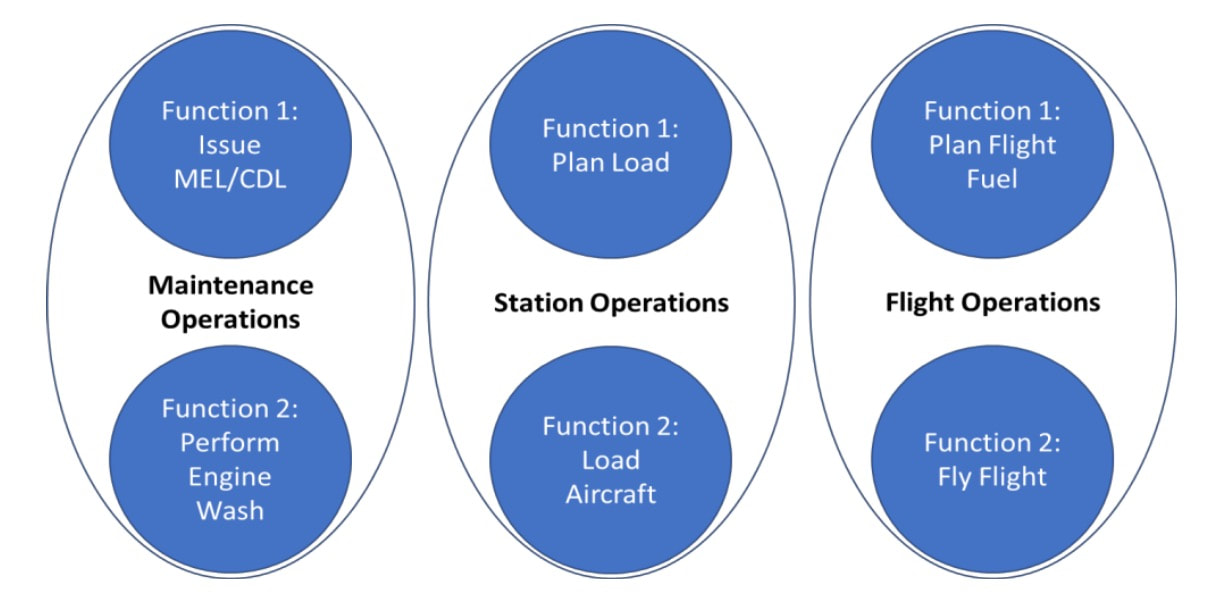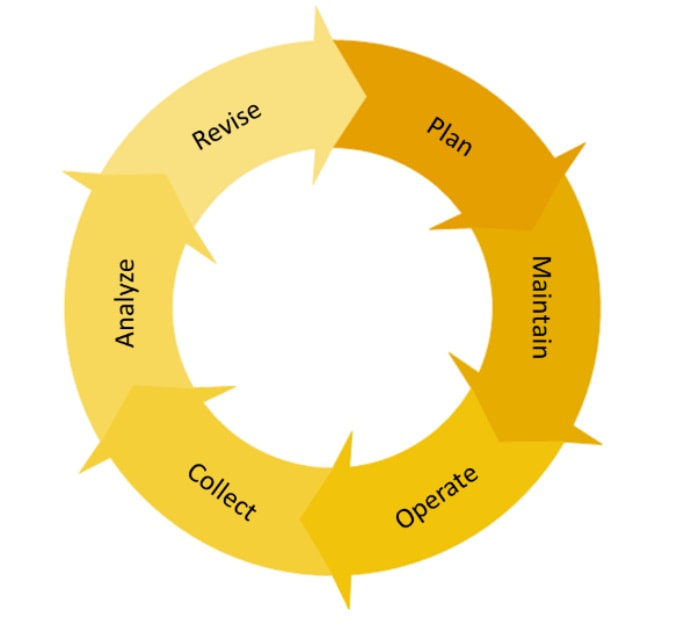The Cost of Aircraft Fuel (Are You Ready for Change?) Most airlines would agree that some of the most significant areas for potential operational cost savings are in reducing fuel consumption and related costs. Many airlines have sufficient internal resources to conduct fuel efficiency studies. However, there are short- term options for those that do not have the resources with expertise in this area. One of those options is to contract with external resources to identify fuel saving opportunities and launch projects to realize the potential savings. Projects of this type are not easy because they involve gathering data from multiple Functions* and sources and standardizing that data. The model in Figure 1 below illustrates an example of Functional Groupings by operational area. Current operational performance data can only be baselined after it is gathered and standardized. Additionally, various detailed analyses are performed to convert the data into usable information. This information enables decisions for changes to be made based on quantifiable criteria and to calculate anticipated results, as well as measure and compare those calculations with the actual results achieved from actions taken. *Function Analysis System Technique – A Stimulating Tool, by Anil Kumar Mukhopadhyaya The complexity of fuel use analysis drives the need for active participation across all departments involved in airline operations. Each Function and Functional Grouping needs to examine how they work, including safety, the approved company operating requirements and goals, and their data collection requirements. Additionally, each functional group must define current output requirements to associated groups and ensure they sufficiently meet all specified requirements. These actions then set into motion a process as reflected in Figure 2. Data is collected and analyzed for performance to plan and goals. These results may drive revisions to planning procedures and output for several Functions in the areas involved. The revised planning procedures may be applied in how aircraft are maintained, how flights are planned, and how they are operated, in the ground and air phases of operations. The diagram only maps out the process. The details underlying each section reflect a significant level of recurring effort. After the initial baseline, each operation generates data for continuously updated analyses and potential refinement of procedures, or as the expression goes; rinse and repeat! A True (But Sad) Story of a Fuel Study Gone Wrong Fuel (and Money) to Burn A Fuel Study was conducted for a small commercial airline operating narrow-body aircraft. After spending two weeks embedded in all operational aspects of the airline, focus sessions were conducted and operational observations were performed with the following groups:
The teams explored many facets of the airline’s operations, including but not limited to: how they maintained their aircraft, planned flights, managed flight execution, collected flight data, and aircraft configuration. Together, the teams established meaningful KPIs and performed an analysis of their planning to actual performance. They examined in- flight services provided and how current service practices matched the aircraft equipment, service provision, and fuel cost goals. Working together with the airline departments, nearly a dozen areas of potential savings were identified. These included but were not limited to:
The identified changes amounted to a potential annual savings of about $400,000 per aircraft, with a minimal investment in process improvements, training, and maintenance labor for work on the aircraft. The Director of Maintenance’s team began their work immediately, even before our team had completed the on-site work. They were on their way to continued annual savings and a potential ROI of less than two months! The Rest of the story
Nearly a year later, a call was received from one airline executive wanting to talk about the savings they had not experienced. A call was set up to discuss each of the recommended changes that should have been implemented. He advised us during that call that his boss had told him not to make any changes, with no explanation as to why. Not implementing any of those recommendations had cost them the opportunity to save up to $400,000 per aircraft. In addition to the loss of potential savings, they had spent money on consulting fees increasing instead of reducing their costs! In the end, the airline was just not ready to make changes, even though the business case was there. It appeared the changes that should have been saving them money, plus improving the airline’s operational performance for the past year, had not been important enough to break through the existing management's resistance to change. Are you ready for a change? If you're motivated to explore what changes can improve your operation's fuel performance and bottom line, and you're ready to invest energy into making it happen, take action! Request a 1 hour, no-cost advisory session with Envision Aviation Advisors. Or, look us up on Linkedin and send us a note about your operation’s Fuel Health concerns. We'll give you a no-nonsense walk-through of how we work collaboratively in our Fuel Health Studies to help ensure your success. |
envision aviation advisorsSharing insights from our more than 100 years of combined experience in the aviation industry across 6 continents Archives
October 2021
Categories |
envision aviation advisorsSeattle, WA, USA
|
Shortcuts |
|
|
Copyright © 2024 · Envision Aviation Advisors, Seattle, Washington USA
|
Site built and marketed by Blockbeta Marketing
|



 RSS Feed
RSS Feed







